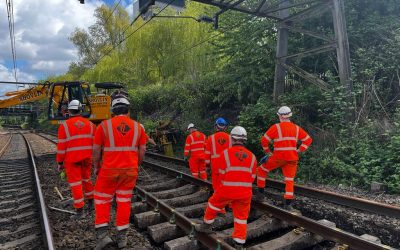The Evolution of Railway Safety Technologies
The railway industry, with its rich history spanning over two centuries, has witnessed remarkable advancements in technology. As trains became faster, longer, and more frequent, the need for enhanced safety mechanisms became paramount. This article delves into the evolution of railway safety technologies, tracing their journey from rudimentary systems to the sophisticated technologies of today.
The Early Days: Manual Systems and Human Vigilance
In the initial days of railways, safety largely depended on manual systems and human vigilance. Train movements were coordinated using hand signals, lanterns, and mechanical semaphores. While these methods were effective for their time, they were prone to human error and had limitations in ensuring safety, especially during nighttime or adverse weather conditions.
The Advent of Electrical Signalling
The late 19th and early 20th centuries saw the introduction of electrical signalling systems. These systems used electrical circuits and relays to control signals, eliminating the need for manual operation. This not only improved safety by reducing human error but also allowed for more trains to operate on the tracks simultaneously.
Automatic Train Control (ATC)
Introduced in the early 20th century, ATC was a game-changer. This system automatically stops a train if it exceeds a predetermined speed or if it approaches a signal indicating danger. ATC was a significant step towards preventing collisions and ensuring that trains operated within safe speed limits.
The Rise of Communication-Based Systems
With advancements in communication technologies, the latter half of the 20th century saw the development of communication-based train control (CBTC) systems. These systems use wireless communication to relay real-time data between trains and control centres, allowing for precise control of train movements, speeds, and spacing.
Predictive Maintenance Tools
The introduction of sensors and data analytics in the 21st century revolutionised railway maintenance. Predictive maintenance tools can detect potential issues with tracks, trains, or signalling systems before they become critical. This proactive approach not only enhances safety but also reduces downtime and maintenance costs.
High-Speed Train Safety Systems
As trains became faster, the need for advanced safety systems became even more crucial. Modern high-speed trains are equipped with sophisticated onboard computers, automatic braking systems, and advanced signalling technologies that ensure safe operations even at speeds exceeding 300 km/h.
The Role of Artificial Intelligence (AI) and Machine Learning
Recent years have seen the integration of AI and machine learning into railway safety systems. These technologies can analyse vast amounts of data in real-time, predicting potential safety hazards, optimising train schedules, and even automating certain aspects of train control.
The Future: Towards Fully Automated Railways
With the rapid advancements in technology, the future of railway safety looks promising. Concepts like fully automated trains, smart tracks equipped with IoT sensors, and centralised control centres using augmented reality are no longer science fiction. As these technologies mature, they hold the potential to make railways even safer and more efficient.
Conclusion:
The evolution of railway safety technologies is a testament to the industry’s unwavering commitment to safety.
From manual signals to AI-driven systems, each advancement has been a leap towards making railways one of the safest modes of transportation.
As we look to the future, with the convergence of technologies like AI, IoT, and automation, the horizon of railway safety is set to expand even further, promising a safer, more efficient, and more sustainable future for rail travel.




